- info@warwickandwarwick.com
- +44 (0) 1926 499031
Top tips for valuing rare diecast cars
Collecting diecast model cars is a great way for car enthusiasts to own the models they love.
Whilst buying the full-size vehicle is often financially out of reach, owning a detailed replica represents the best way to acquire a piece of automotive history.
Popular with people of all ages, the pastime first originated during the early 1900s when diecast toy manufacturers started to make miniature versions of the Model T and MG sports cars. Advances in the manufacturing process meant that the 1930s was the dawn of a new era for these replicas, which now closely resembled the original vehicle.
At the height of the hobby’s popularity during the late 1960s, the diecast model cars produced were highly regarded for their exact-scale realistic details and superb interiors. Nowadays, collectors become hooked because of their appreciation for the artistry and intricate detailing on each vehicle.
The resurgence of interest in this unique hobby means that we conduct diecast model car valuations on a regular basis. We field calls from novice collectors who want to know what price they should pay for items as well as dealing with experienced collectors who need to know how much their collection is worth.
Regardless of your experience, the aim of this diecast model cars value guide is to provide you with a detailed insight into the prices (and demand) for previously sold models.
If you still need professional help or reassurance after reading this guide, please get in touch - one of our experts will be happy to offer their assistance.
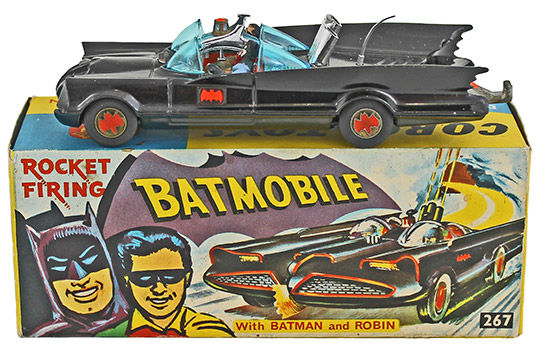
How to start a diecast cars collection
The type of diecast model car you choose to collect is entirely up to you.
Your collection could be centred around specific themes, manufacturers, years, movies or models. For example, someone who likes a certain type of car, such as a Jaguar X Type, may try to collect all the different models that have been produced. They may try to acquire the exact same car, but in various different sizes or scales.
It doesn’t matter which area of interest you choose, just make sure it’s one which suits your budget and is of particular interest to you.
Diecast model cars scale and sizes explained
Diecast model cars are available in various sizes – known as scales – which range from 1/18 to 1/64. The scale represents the ratio or proportion of the model in comparison to the original real-life car. The bigger the second number, the smaller the diecast car.
Toy manufacturers do produce diecast model cars as small as 1/144 and as large as 1/4 scale, but the most popular scales are:
1/64: Measuring about 3 inches long, these are the smallest size commonly produced. This scale is more popular with brands like Matchbox, Hot Wheels and NASCAR. Model cars that are 1/64 can sometimes be described as being on the S scale.
1/43 and 1/32: The most common model car ratio in the world is the 1/43 scale, made popular by the Dinky Die Cast Toys, which were made in the 1930s and usually measuring between 4 inches and 6 inches.
1/24: About 8 inches long, replicas on the 1/24 scale can have the same amount of detail as a 1/18 car, but they tend to be more expensive to buy.
1/18: The biggest scale produced, their 11-inch size shows off the car in most detail, but makes storage difficult so very few are manufactured or collected. Collectors and hobbyists who want more authentic details like working hoods, doors and boot trunks should opt for models built on the 1/18 scale. These cars will have finer details such as operational lights, engine electrical wiring, rubber hoses and suspension as well as a realistic interior.
1/20 to 1/25: Replicas in this scale ratio are also known as the G scale.
1/48: Models of this scale are often referred to as being in the O scale.
1/87: A car this size is known as being HO scale.
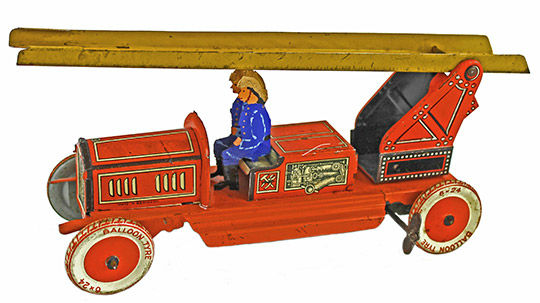
Important diecast model cars terminology
Scale: The proportionate size of the model in comparison to the real-life original version. The main scales are 1/18, 1/24 and 1/64 – as outlined in detail above.
Manufacturer (MFG): The company that produced the diecast car.
Year: The year the car was driven and usually the year the diecast car was produced.
Car Number (#): The number written on the side of the car.
Driver/Description: The name of the driver and any unique identifying information, such as the car sponsor.
Hood Open (H/O): Determines whether the car has a hood which will open to show the engine detail. Most 1/24 and 1/18 scale cars have hoods which open, but the ratio is more like 50-50 for 1/64 scale cars.
Black Window (B/W): A car which has black windows and where the interior cannot be seen. All cars come with clear windows unless marked B/W.
Clear Windows (C/W): A car which has clear windows and where you can see the interior, which is usually a representation of a race-car.
Bank: A car with a coin slot, usually at the base of the rear window, and a locking door on the bottom to get the coins out. Most banks come with black windows so those with clear windows are marked with a C/W.
Limited Edition (LE) or Special Edition (SE) diecast cars: Highly sought after because of their rarity, LE and SE models are usually produced after the last car in a production run has been manufactured. They may have different exterior or interior features, special wheels, tyres or other modifications such as different paint. They usually come with a vehicle number outlining the total number of vehicles produced, with the first and last models usually worth more in value. Models which come with their original papers can be worth more because it is easier to verify its authenticity.
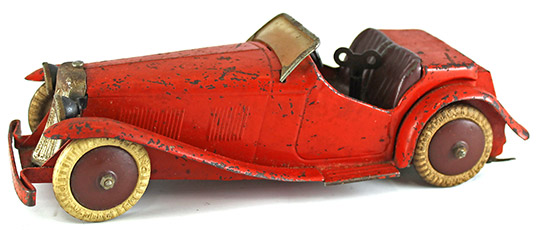
The basic factors which influence a diecast model car’s value
As trusted valuers of collectables since 1958, our experts here at Warwick & Warwick are often asked: How much are my diecast cars worth?
Unless you have years of experience, the answer is not a simple one because accurately evaluating the value of a diecast model car is difficult and can be time consuming. That’s why we frequently receive enquiries from diecast model car dealers, collectors and enthusiasts from all over the world, who recognise our expertise in this area.
Certain diecast car models have a significantly higher value than others simply because of their availability and condition. But there are a number of basic factors that influence and affect how much a diecast car is worth.
The five main factors which affect the value of a diecast model car are:
Size: The size of a replica is a very important factor when it comes to value. Although bigger models tend to be more valuable (on average) than smaller ones, they require more room to display and store which may put off some collectors. For a more detailed explanation of size, please refer to the section in this diecast model cars value guide on ‘scale’ which is outlined above.
Manufacturer: Some manufacturers are much more desirable than others, especially those from the early 1900s. This is often because newer manufacturers are known for producing replicas which are of significantly lower quality - and value.
Availability: If a car was produced in limited numbers, it tends to be worth more. This is because less cars are available so its rarity increases its potential value. Makes, model, drivers or sponsors which are highly sought after may also be worth more because they are difficult to obtain.
Trends: Market conditions can cause the price of diecast cars to vary. For example, if a specific driver wins a championship, retires or has an accident their cars often gain temporary popularity and force prices to rise.
Condition: Obviously, appearance is one of the main factors which influences a diecast model car’s value. Serious collectors are often only interested in ‘mint condition’ vehicles, which have no visible wear or defects. These vehicles will have a higher resale value when compared to an identical model with minor marks or blemishes.
The four main ‘conditions’ of a diecast model car are:
Mint condition: No signs of wear or defects are present and the paint finish is in perfect condition. The car does not have any missing, misaligned or damaged parts.
Mint in Box (MIB): A diecast model car which is in perfect ‘mint’ condition and still in its original packaging.
Mint on Mint Card (MOMC): A diecast model car and container that is in perfect condition and still in the original manufacturer’s packaging.
Always carefully inspect cars in MIB and MOMC condition as vehicles may still have blemishes even though they are in their original packaging. The blister packaging should also be well inspected to see if it has any minor blemishes.
Other: An indication that the vehicle has some form of damage, such as chipped paint, missing, damaged or misaligned parts, production markings or just general wear and tear.
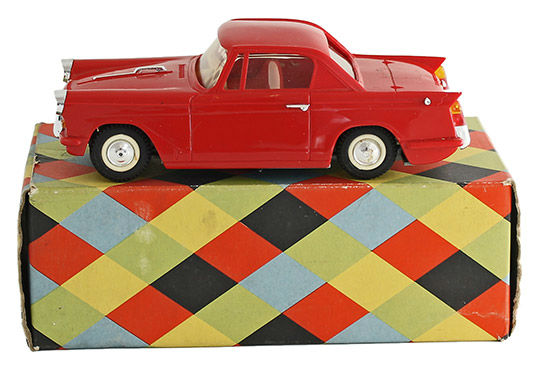
How to store and protect diecast model cars
Whether you are buying diecast model cars for investment, have inherited a collection or worked hard to compile one, it is important to know how to protect and store them properly to preserve their value.
As we have already outlined above, the value of a diecast car is heavily dependent on its condition. If possible, always keep any original documents, containers or packaging as this can help to establish the item’s its origin and provenance, increasing its worth.
Here are a few tips to keep your diecast model cars in the best condition possible:
- Always keep your collections away from direct sunlight as this can cause fading and damage the finish.
- Keep it somewhere which does not experience high temperature fluctuations, which can warp the body or damage the car’s finish.
- Use hard plastic or glass display cases to store cars where possible.
- Avoid locations which experience high humidity to prevent damage or warping.
- Make sure limited editions or rare items are suitably insured.
- Get a specialist insurance broker to cover an entire collection to protect your investment in the event of an accident.
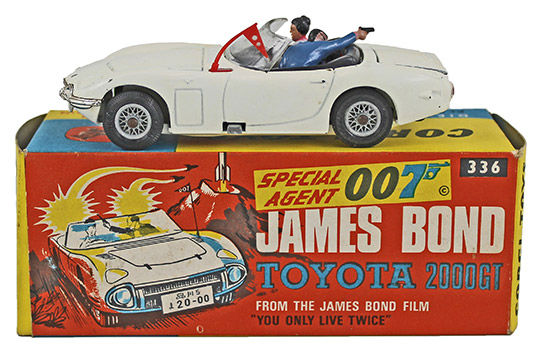
Buying, selling and valuing diecast model cars with confidence
Although collecting diecast model cars is a popular and rewarding hobby, it’s worth remembering that they are collectables, and it is important to enjoy ownership of your collection. Diecast model cars are only of ‘value’ to a collector or someone who wants them.
Putting together a collection of diecast cars should not be about money, it should be about the fun you have doing it. Forget about the ‘price’ you could get for it and look at the collection’s value to you.
If you do want to find the exact value of a diecast model car, do not place too much emphasis on the prices you see on various internet auction sites. These ‘asking prices’ are NOT actual realised prices and the price being sought can vary massively from current market values.
It can also be tempting to value your car based on the price of a similar diecast model. However, cars can have dramatically different values depending on the year they were produced – even if they have the same driver or other similar features.
If you do own a rare diecast model car or collection that you’d like valued, please get in touch - our experts are happy to offer this service free of charge.
If you wish to sell they will also be able to advise you about the best way to do so – whether that is by auction or private treaty sale.
We are regularly in touch with buyers and sellers from all over the world – and have a wealth of contacts on our database. To find rare, old and vintage diecast model cars for sale, take a look at our auction catalogues today.

